Iceland is called the Land of Fire and Ice and now that I’ve visited, I understand why. Iceland has around 45 volcanoes and the Vatnajökull Glacier is the largest icecap in Europe. Driving around this beautiful island there is always either a volcano or glacier in sight… Iceland was definitely topping my list as one of the most impressive places I’ve ever visited each day!
I always wanted a real adventure and I was sure that the undiscovered corners of south coast Iceland would be the perfect setting.
Hitting the south coast road modern life seemed to slip away as we drove across this lunar landscape, where the horizon seemed impossibly distant. Outside the car the temperature had dropped from this morning’s 10C to 3C and the wind whipped the finest particles of snow into my face.
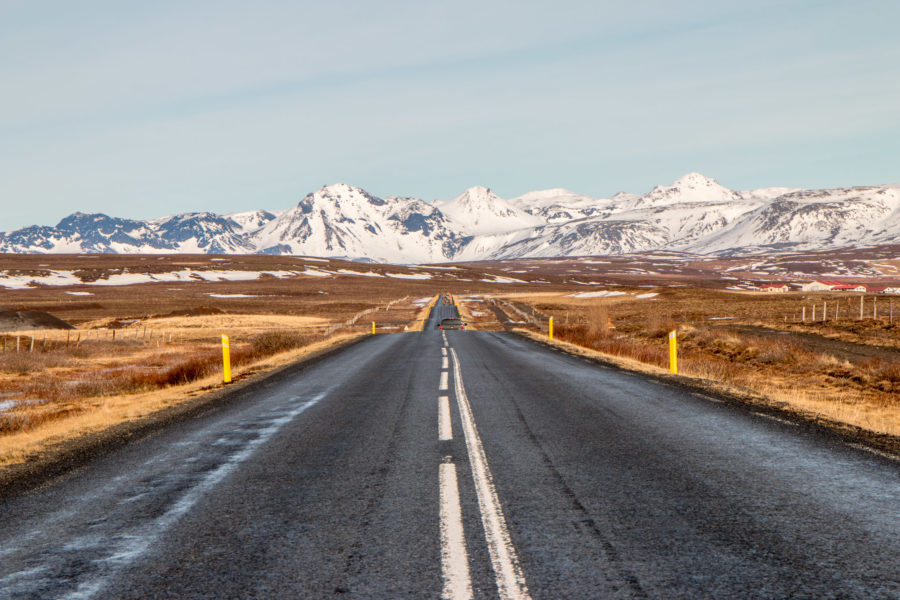
When on the road you have to understand that the weather in Iceland is a very powerful thing. It probably changes faster than anywhere else in the world except the Poles.
Making our first stop at Seljalandsfoss Waterfall I fathomed Iceland is a magical landscape for so many reasons. Whether you fall in love with the best waterfalls in Iceland or perhaps the unique volcanic landscape that typifies the heart of the nation, it’s fair to say that Iceland has a little something for everyone.
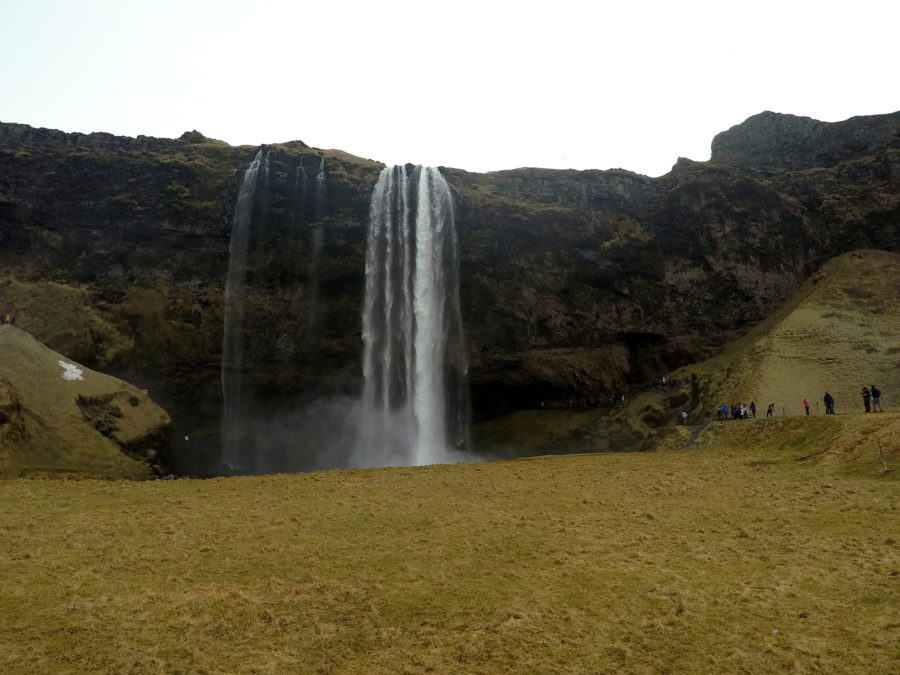
The waterfall being 60m high, the closer you approach the waterfall you can feel the water droplets greeting you on your skin. However, with the snow just melting off and making the walkway so slippery it was a sight and a task both to reach the foot of this waterfall. The only thing you can hang on to is a rope while dangling your dancing feet all the way up. I was lucky to be here just when the snow had begun to melt as there is a cave behind the waterfall where you can walk into.

While making my hike up to the waterfall this time of year, I was almost drenched trying to trudge through freezing water and a small crevice to the base of the falls! Either way, I was prepared for an adventure and a sight to behold!

Feeling the air filled with fragments of water this spot does give you on top of the world feeling.
Heading to Jökulsárlón Glacier Lagoon next this large glacier lake is on the edge of Vatnajökull National Park. Well-known spot for viewing floating pieces of glaciers that break off over time. Moreover, catching a glimpse of it at sunset when an orange glow kisses the top of the surrounding snowy mountains and the lagoon reflects a deep turquoise blue was nothing more than gorgeous.


Renowned frequently as the “jewel in the crown” in terms of the best things to do in South Iceland, Jökulsárlón is the lagoon that feeds the large chunks of ice along the narrow waterway and into the Atlantic Ocean.
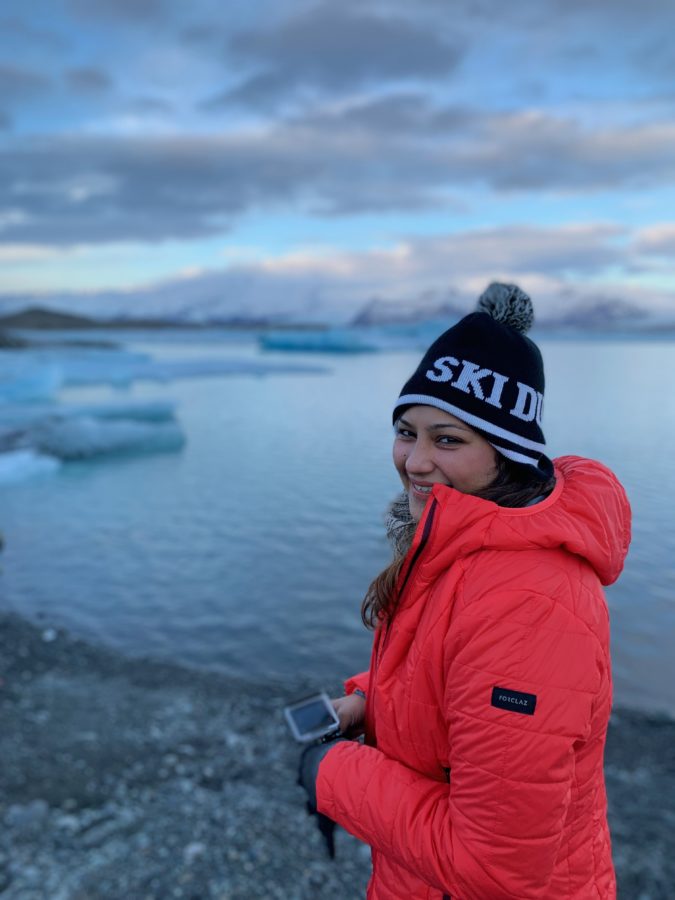
This glacier lagoon that appeared only around 1935, has grown to over 20 square kilometers due to the melting of glaciers, particularly the Vatnajökull glacier which feeds into this lagoon.

Sitting here and marveling at each fragment of these glacier ice was a discovery by itself.


Right across from Jökulsárlón Glacier Lagoon there is another famous black sand beach. Once we arrived on the shore, we could see copious large and small pieces of glacier ice that have floated out of the lagoon, into the sea, and made its way to this beach.

It’s crazy to imagine taking a stroll along a beach and stumbling across a gorgeous piece of ice. So far, I had only been familiar with the gorgeous, white sandy beaches that we associate with the Caribbean islands but what about when you are presented with a black sandy beach full of intricately sculptured ice fragments? Sounds absolutely crazy? Yes, I was about to discover this spectacle.

And the only thing you can say is it’s an experience and you have to see with your own eyes to actually believe it.
Taking several moments to browse around not only at the various shapes but also the diverse blend of colors that we saw in the ice fragments was not enough. Many of them are perfectly clear and look like glass or “diamonds” while others have a blue appearance.

The beauty of visiting Diamond Beach is that each time you visit, it will be different. Just like any other natural landscape that is constantly changing, Diamond Beach never looks the same twice!! It’s perhaps this aspect that may make me want to return time and time again to see something new.
Seeing the sun sparkle on the ice fragments shine brighter than diamonds was definitely you don’t get to see anywhere else.

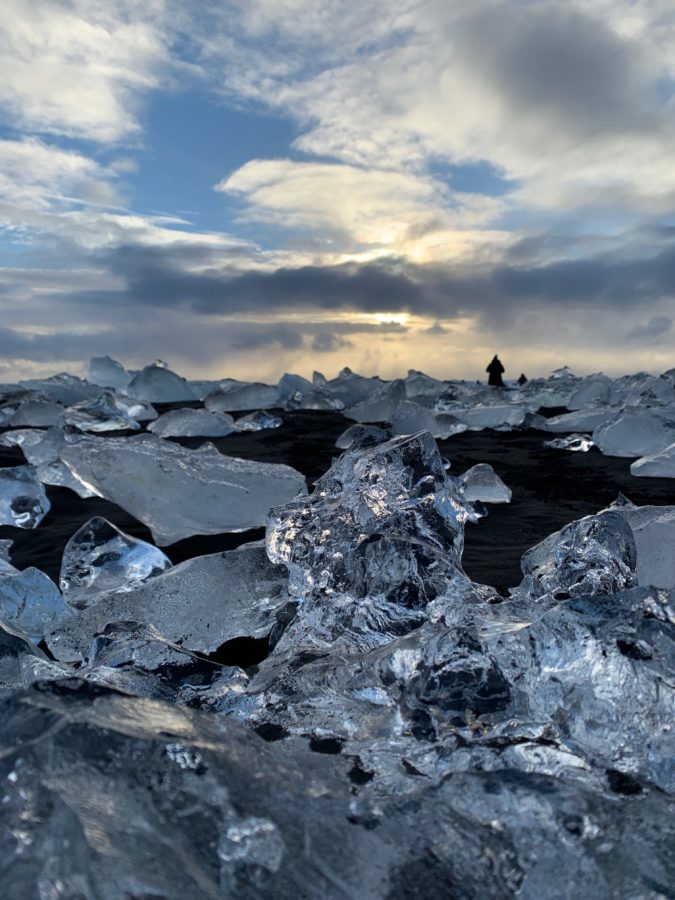
Only once you have seen it for yourself you will believe why this mesmerizing beach in Iceland is known as Diamond Beach.
The black sand shores of the beach are peppered with gigantic, crystal clear shiny icebergs from the glacier that shine like real diamonds in the blazing sun!

Having my evening made up of so many astonishing sights at the end of the day we backtracked a little and stayed in Höfn .
With the first day on the South coast spent amidst such marvels, I couldn’t wait for Day 2 to arrive any sooner. Ready to wake up at the crack of dawn and be prepared just to go go go, all because you don’t want to miss anything!
Starting with another famous waterfall, Skógafoss Waterfall, I was lucky enough to visit on a sunny day and see a rainbow in front of the falls.


This was among one of my absolute favorite waterfalls of all the ones we saw in Iceland; because you will feel your own humanity as you face off this giant natural wonder.
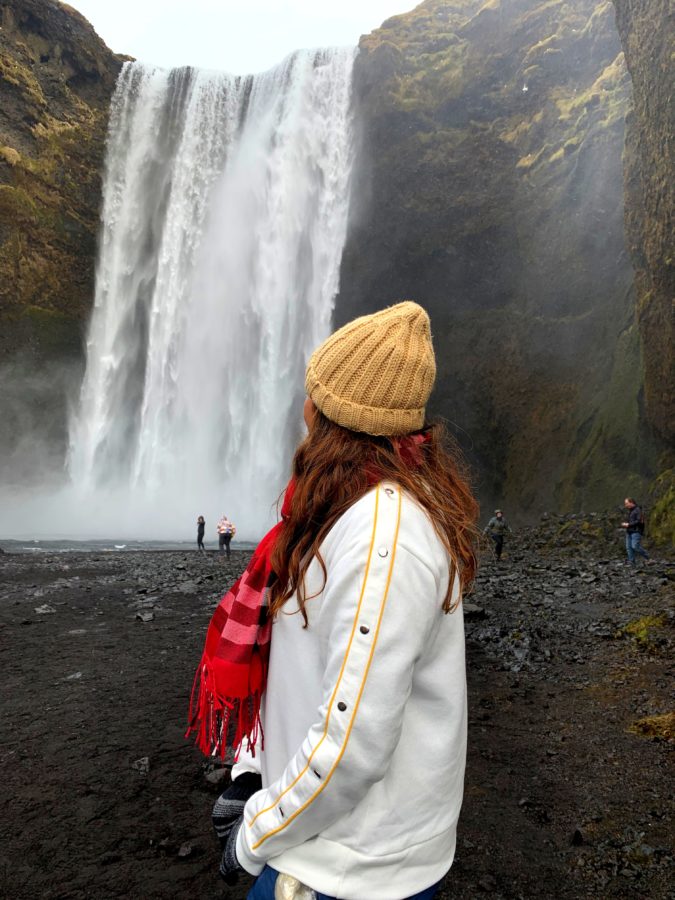
With sunshine being sporadic this time of year, I was in for a real treat having a chance of standing underneath the waterfall with sun on my side.
Having visited the waterfall next stop was at Reynisfjara Black Sand Beach. Being valued as the most famous black sand beach in Iceland and one of the ten most beautiful non-tropical beaches in the world, I had to see it for myself and ascertain why.

Minutes into stepping foot at this beach the highlight that caught my eyes about this beach were the symmetrical hexagon columns lining the beach, formed by lava as if cooled and contracted on the shore. Seeing the basalt columns so perfectly shaped it’s hard to believe this is a natural wonder by itself.

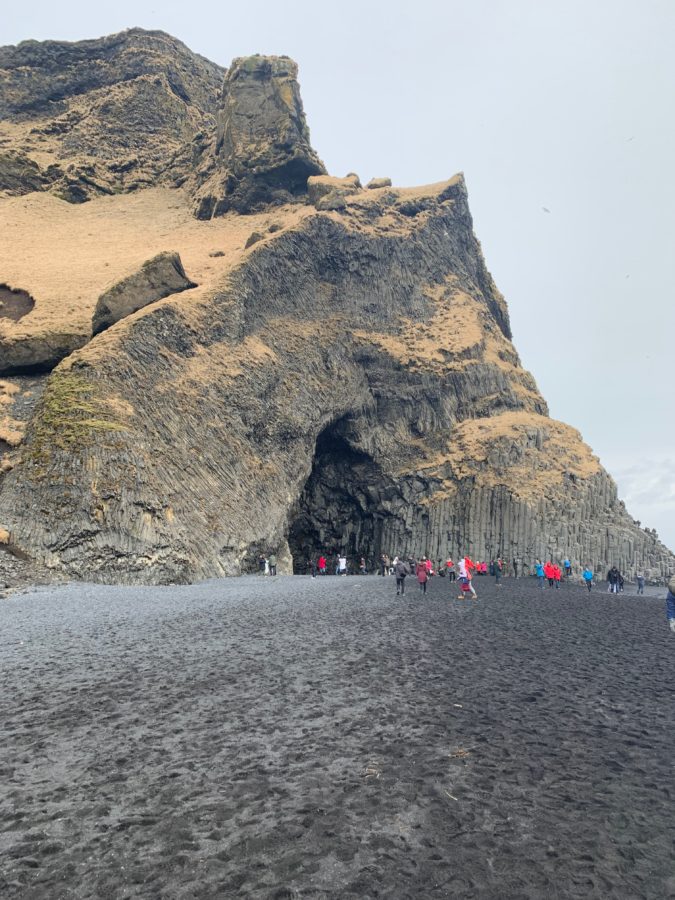

Admiring the enormous basalt stacks, roaring Atlantic waves and stunning panoramas, Reynisfjara is definitely one of the most beautiful and powerful beaches I visited in Iceland.

Sitting by this black sand beach makes you see beauty even in the darkest of the colors.
Getting back on route to witness our next marvelous sight, a small detour on the trip was well served with a visit to the abandoned DC plane on the black beach at Sólheimansandur. Not easy and quick to reach, yes you have a 45 min one way trip to make it to the plane and same journey on the return. But being determined and battling the weather I decided to start making the march.
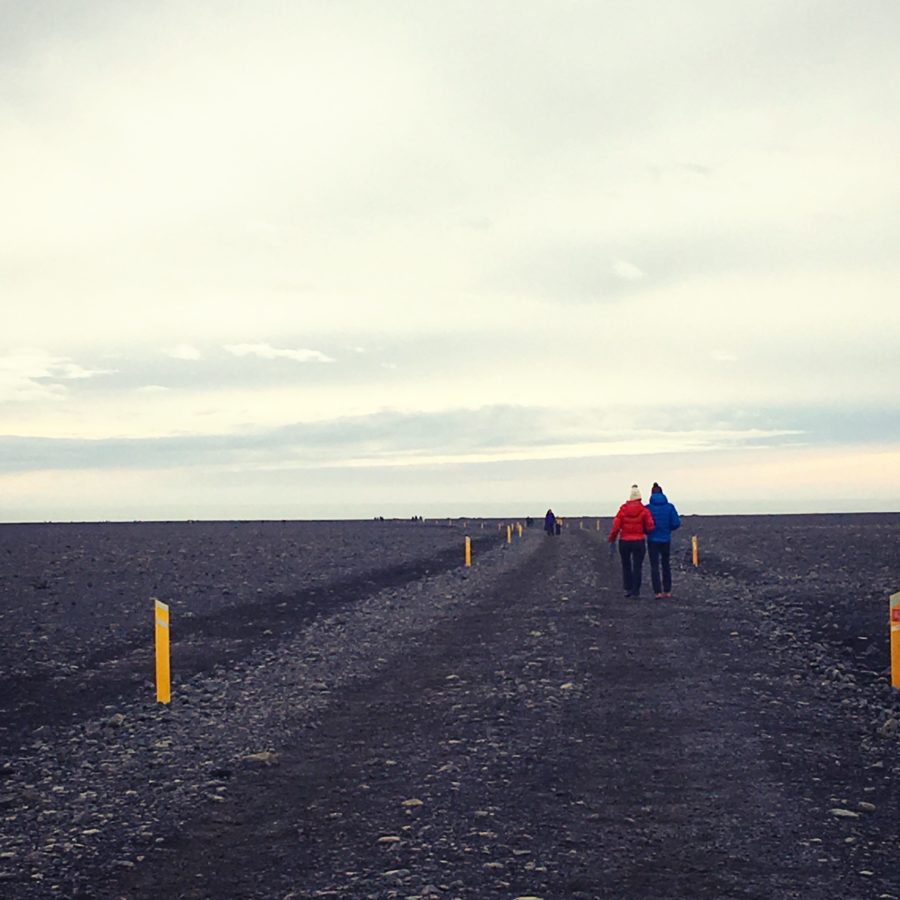
The scenery that caught me on the way to the white abandoned DC on the totally black sand is quite surreal. You have no signs of habitation for miles around and feel you are walking abandoned on a different planet altogether. The sight all the way to the plane was actually like a science fiction movie.

This epic plane wreck on the black beach in South Iceland was a United States Navy DC plane that ran out of fuel and crashed on the black beach at Sólheimasandur. Fortunately, everyone in that plane survived. The remains are still on the sand very close to the sea. But when you get there you will wonder how anybody survived let alone everybody.

Yes, the 40-year-old weather-beaten DC-3 airplane still remains on as a good sign of the crash that was survived by everyone. In the years since its rocky landing, the DC Plane Wreck has borne the brunt of Iceland’s tempestuous weather; heavy rainfall, freezing and powerful gales. Today, the aircraft’s wings are no longer attached, and it has only half a tail.

Not a permanent sight in Iceland, lucky to have witness it for myself!
But this little adventure was worth everything and you get to go inside the plane to explore further.


After exploring this historic site we made our way to a small town of Vik before heading to the main adventure!
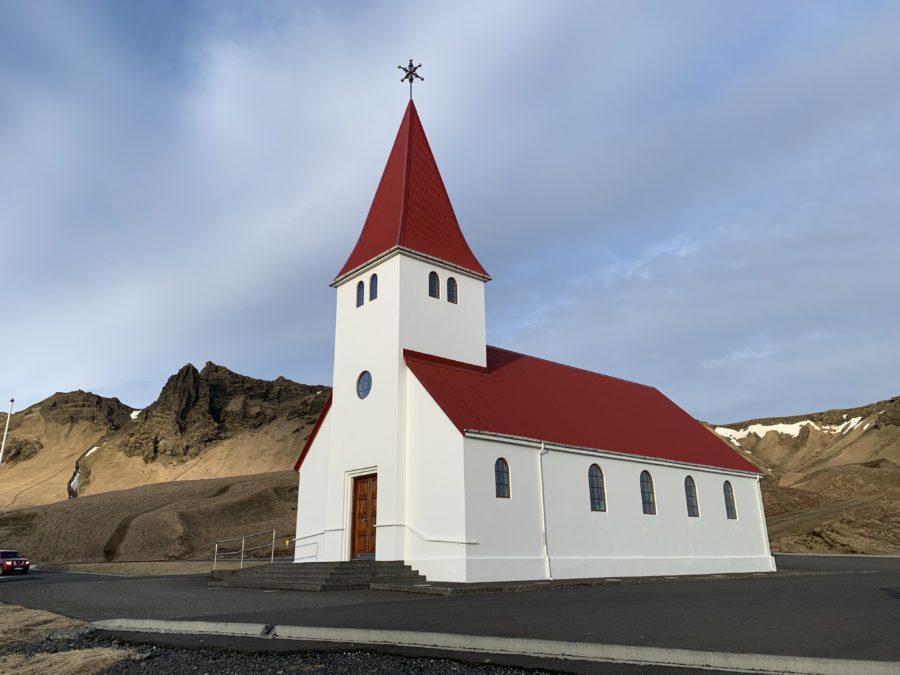

With a magnificent church as the epicenter of this town and houses situated on a hillside, I felt Vík as one of the most idyllic little towns in Iceland. It dazed me to know despite its small size (291 inhabitants), it is the largest settlement for 70km. That being said, I was all refreshed and refueled now for taking on the upcoming glaciers.
The more you keep exploring Iceland its only then you realize there certainly is no shortage of attractions and interesting experiences that you can enjoy in this country. It’s all about driving through the Icelandic roads with mountains on your side and adventure in your heart! Exploring the Highlands of Iceland makes you feel like living in an alternate world.

The Eldraun Lava Field was one such sight. Created in one of the most devastating eruptions in recorded history over a course of eight months, between 1783 and 1784.

The volcano that erupted poured out an estimated 14 cubic kilometres of basalt lava. This black lava field stretched over around 565 km. Over a period of time giving rise to these striking mossy fields. From far they look like miles and miles of soothing green extend all the way to the horizon, filling up your sight. It’s like endless green clouds resting on the ground, constantly shifting colours and shadows.


However, once you go near them you realise the moss is very delicate and it is not allowed to walk in the area. The best way to enjoy the sight is to stop at one of the nearby parking spaces near the main road and witness them.

From here we moved onto the last and the main highlight of the south coast trip that I was here for. One of the reasons I was so keen to visit Iceland in winter was to see its incredible ice caves. I’d been catching up sights of them all over the internet all these years and couldn’t believe my eyes – I didn’t know such a thing existed before then. And nothing more than this my curious heart ever wanted to see.
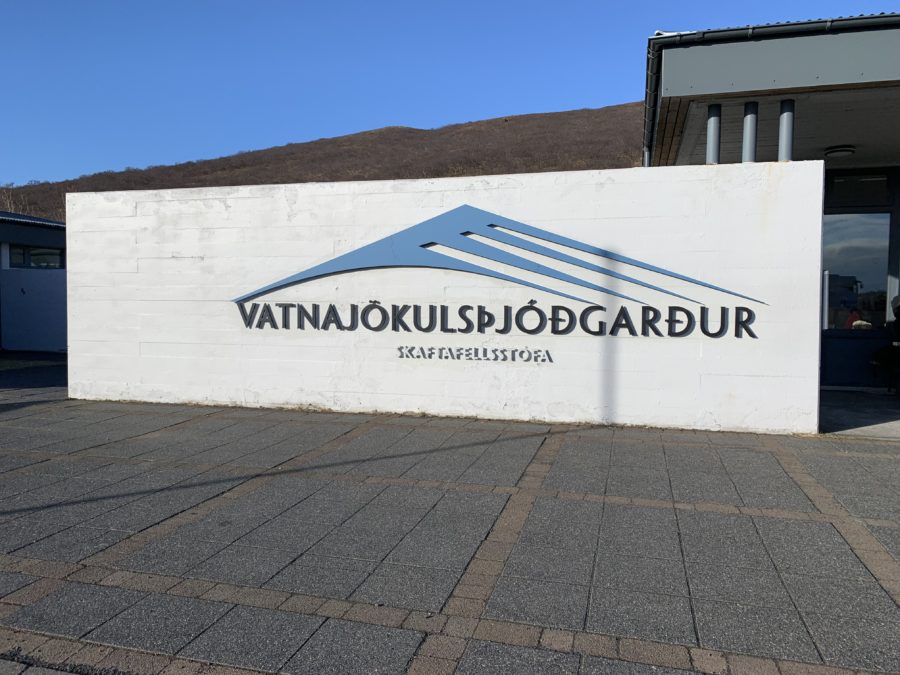
Arriving at the foot of the glacier you can see although the glaciers are right there, you cannot not go on the glaciers without a tour. A good guide will be testing and footing every step of the way as there are crevasses where the ice has melted that you can fall into if you’re not careful.


The excursion starts with a briefing session and the guides preparing you with your equipment – a harness, crampons and helmet – while sharing their knowledge of the area as we get ready for the climb. This being my very first experience of glacier walks, I was nervous yet so curious to make it to the top.



Every move on the glacier is made by jolting the crampons into the ice to get a firm stance and then using the ice picks to lift yourself up. You are using a whole lot of energy than you would in a normal uphill climb.

Walking on a glacier is quite strenuous, but given the effort required you soon warm up despite being on a massive glacier tongue, with chilling wind around! The highlight though, you never get thirsty on the glacier as there are lots of opportunities to get fresh, cold water – straight from the glacier.


The walk lasted around an hour before arriving at the Ice cave. They say if you want to see sunshine you have to weather the storm, and this experience was just it!
The glacier walks and ice climb were one of the highlights of making my trip to Ice caves. To be on a glacier of any sort is a great excursion but to be walking on one like Solheimajokull, which has changed so much in recent years due to Iceland’s volcanic activity, was fantastic. They say the journey to your destination is more important and today it held absolutely true. The glacier walk was one such journey I did not want to end though anticipating the Ice caves we came in search for.
The Ice caves we were in search of, form when the glacial rivers retract and freeze during the winter. They form in different shapes and locations every year and create worlds of deepest blue.

When I entered the ice cave the beauty of it just took my breath away.
Once you are inside the incredible blue ice caves, everything seems worthwhile. The long hike, the climb, the winds your encountered, the cold weather; all of it suddenly makes the journey worthwhile! I turned into a 10-year-old, playing in the snow and touching this blue ice which formed an ice dome above my head. It’s one of the most impressive natural wonders I’ve ever seen.

It was like suddenly I have entered the deep blue world below!


The ice cave is big and further inside! Away from the light, the ice turns into a sapphire blue wonderland! With ice sculptures and icicles hanging from the ceiling! The shapes and spectrum of blues created by the ice are mesmerising, and unlike anything I’ve ever seen.
I think pictures will speak louder than words, so here’s a selection from my visit to the Crystal Cave.




Exploring Iceland in March was an excellent idea as I got to experience all four seasons in just a week. While it was cold all around the entire island, most of the snow had melted in the South and yellowish/green grass covers the ground everywhere you look. And the panoramas I experienced can only be described as a winter wonderland.

Never in my life have I seen such an awe-inspiring place. With milky blue geothermal springs, enormous waterfalls, native wild horses, black sand beaches, jagged mountains, ice-blue glaciers, and the northern lights, the “Land of Fire and Ice” has left me utterly speechless. One thing is for sure – Iceland makes you feel at one with nature in a way you’ve never felt before.
Cannot Miss:
- Taking the Road Trip to South Coast Iceland
- Exploring the mesmerising waterfalls
- Go off route to hike towards the DC plane crash site
- Collect life time of memorable at Diamond Beach
- Get your energy on for the Glacier Hike experience
- Explore the Crystal Blue Ice caves

